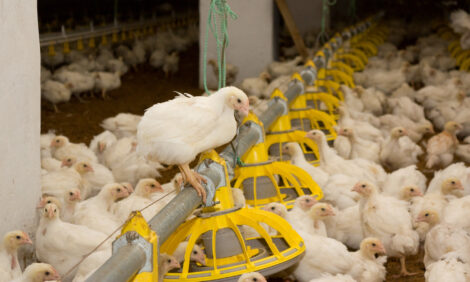



EPA Issues New Guidelines for Water Reuse
A regulatory update by John Pierson, published in 'Poultry Tech'.Water reuse has been a goal of the poultry processing industry for many years. The Food Safety and Inspection Service (FSIS) established guidelines in 1999, where related performance standards for sanitation clearly require a supply of running water that complies with the National Primary Drinking Water regulations (40 CFR Part 141) for product contact.
Interestingly, although the US Environmental Protection Agency (EPA) enforces the national drinking water standards, water reuse regulations are administered on a state or local level. Thus, to encourage a more uniform approach, the EPA has issued guidelines for water reuse and recently updated its 1992 document, 'Guidelines for Water Reuse' (Guidelines). The original document was published in 1980.
The update was issued as technologies have advanced, the field of application has broadened, and regulations are evolving. As a means of summarising these activities, the Guidelines provide several case studies of projects that discuss the technologies, applications, and regulations. Agricultural irrigation of food and non-food crops is prominent, although industrial reuse for the food industry is included. The update draws heavily upon a recent National Academies Press book that examined water reuse with a particular focus on the potential for expanding the nation’s water supply through reuse of municipal wastewater.
From a broad perspective, water has evolved from a generally plentiful resource to a scarcer commodity as the core water infrastructure matured and stagnated while the population has continued to spread across the country and grow. As such, people developed areas that required water from other areas. One result of this historical phenomenon is that the need for water reuse continues to grow. In fact, the updated EPA guidelines note that "As technologies are now advanced enough to treat wastewater to the water quality required for the intended use, the concept of "fit for purpose" is highlighted to emphasise the efficiencies realized by designing reuse for specific end applications."
|
Definitions used to establish the distinction between indirect (IPR) and direct potable reuse (DPR)
|
Given the FSIS guidelines for product contact water, poultry processing and allied industries are examining new technologies with a direct focus on the concept of "fit for purpose". Here, a critical aspect is highlighting the need for potable reuse technologies, applications, and regulations versus the broader notion of water reuse or reclamation (irrigation and agricultural purposes). Of particular importance in the updated guidelines and the National Academies Press book assessment is the distinction between indirect (IPR) and direct potable reuse (DPR). Indirect potable water reuse utilizes an environmental buffer between discharge and reuse while DPR does not.
*
"Of particular importance in the updated guidelines and the National Academies Press book assessment is the distinction between indirect (IPR) and direct potable reuse (DPR)"
Those knowledgeable of processing effluents from full treatment systems designed to directly discharge are familiar with the water quality relative to streams or rivers where these waters are released. Here, primary (physical), secondary (chemical), and tertiary treatment (biological, both traditional basins and membrane bioreactors) processes followed by ultraviolet light germicidal disinfection are commonplace. Beverage processors often also include reverse osmosis and/or ozonation. Yet, public perception of reclaimed effluents is still a major concern for the broader range of food manufacturers and processors.
The growing consumer desire for demonstrated corporate social responsibility and sustainability is also fostering a discussion on the possibility of attaining energy and resource savings by treating high-quality effluent waters. Consequently, a key step is being taken at the municipal level to allow reuse of full-treatment process effluents. And the number of case studies is growing where municipalities are pilot-testing direct potable water reuse of reclaimed municipal wastewaters. However, this step is still only allowing that process effluents undergo treatment that complies with the National Primary Drinking Water regulations.
Thus, water conservation and non-product contact reuse (in keeping with the FSIS guidelines) remains the state-of-the art for water reuse in the poultry processing and other food industries. Regardless, keeping an eye on the successes of using reclaimed water on food crops may greatly advance the guidelines that shape closing the loop for water reuse.
Innovative approaches that are pushing effluent quality standards are occurring, with a growing interest in membrane bioreactors. Georgia Tech engineers are working to provide better materials separations of various process streams. However, research is needed to better understand the protection provided by natural barriers relative to engineered processes.
September 2013









